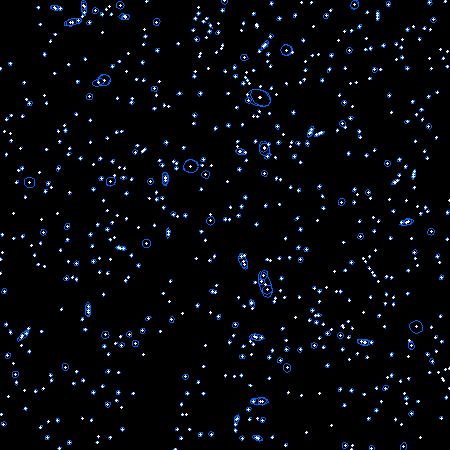Data extracted from large astronomical sky surveys such as the Supercosmos Sky Surveys (SSS) contain a number of objects which are artefacts coming from nuisance objects in the sky or problematic image characteristics, such as diffraction spikes and satellite tracks. These artefacts can seriously hinder the location of interesting objects or skew statistical calculations. Satellite tracks occur because satellites move on a time scale which is shorter than the exposure time for the plate. The dataset obtained from each plate tends to include about half a million to five million objects, most of which will be stars or galaxies, although some of which will result from satellite tracks. Examples of various spurious objects in the data overlayed on a compressed form of the original plate image can be seen below. Here the ellipses summarise the catalogue data associated with the given region of the image. All the methods developed here work on the catalogue data alone for reasons of efficiency. The images illustrate (in order) a dense satellite track, a sparse track from a satellite or item of space junk, diffraction spike and halo patterns, aeroplane tracks, and a short scratch on the plate.
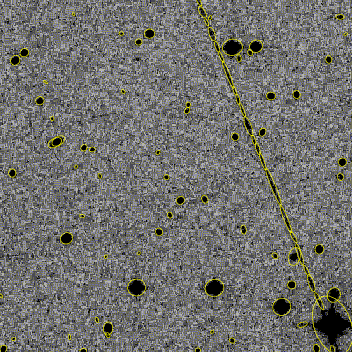
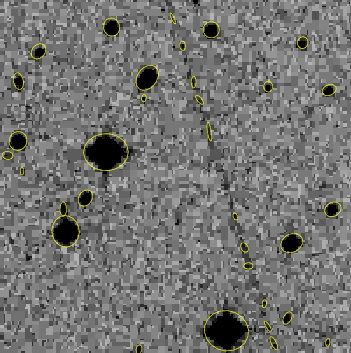
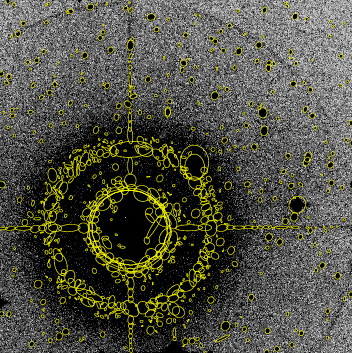
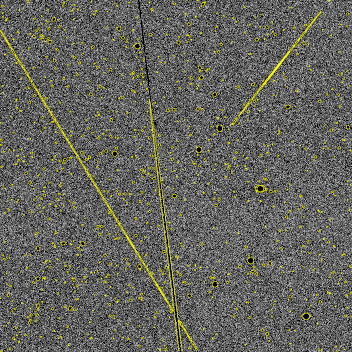
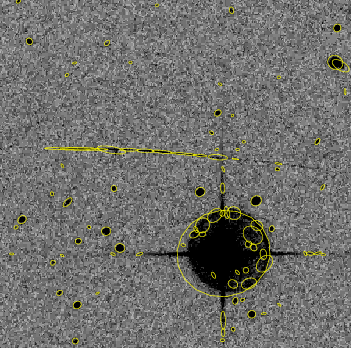
In general there will be from ten to a few thousand objects on each linear feature. Tracks need not traverse the whole plate. Also tracks created by aeroplanes are often from flashing lights resulting in a dashed line across the plate.
Although these tracks appear straight they are in fact curved. Satellite tracks are elliptical sections and scratches generally have some curve to them. Many objects will be contained within the arc of the curve. It is also important that high levels of accuracy are achieved in track recognition and object labelling, and so labelling too large a region is inappropriate.
In reality the form the objects take along the satellite track can vary significantly in the SSS data. Sometimes the objects have ellipses elongated along the track, other times they are much more point like. Sometimes part of the track is already removed because it corresponded to an object which was found to be too large.
The Hough transform would appear to be a reasonable way to start locate the satellite tracks. For an outline and demonstration of the Hough transform, see Hough Transform.
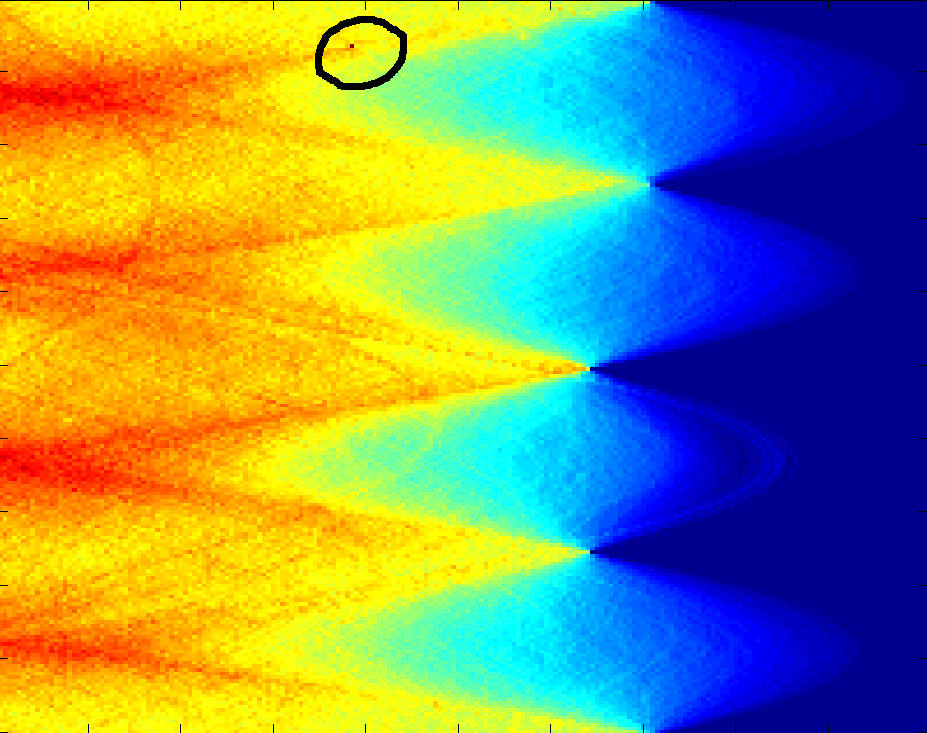 For large tracks which traverse the whole plate this approach can give some benefit. The figure to the left shows a Hough transform of the ukj005 data (angle {0 to 360 degrees} on the vertical axis, distance from origin on the horizontal) along with a circle including the Hough box corresponding to the primary satellite track on that plate. However the curvature of the satellite track, the fact that some of the satellite tracks are very short and other related problems mean that Hough transform approaches are not ideal. The resolution needed cannot be achieved. A new method, called renewal strings has been developed as part of this project which enables satellite track of various forms to be located with high accuracy. Further details will be given soon (by May 2002 hopefully). In the meantime a demo flythrough of the results for the ukj005 data is available on the demonstrations page. A picture of one short satellite track or scratch is given below. The automatically flagged objects associated with the track are coloured differently:
For large tracks which traverse the whole plate this approach can give some benefit. The figure to the left shows a Hough transform of the ukj005 data (angle {0 to 360 degrees} on the vertical axis, distance from origin on the horizontal) along with a circle including the Hough box corresponding to the primary satellite track on that plate. However the curvature of the satellite track, the fact that some of the satellite tracks are very short and other related problems mean that Hough transform approaches are not ideal. The resolution needed cannot be achieved. A new method, called renewal strings has been developed as part of this project which enables satellite track of various forms to be located with high accuracy. Further details will be given soon (by May 2002 hopefully). In the meantime a demo flythrough of the results for the ukj005 data is available on the demonstrations page. A picture of one short satellite track or scratch is given below. The automatically flagged objects associated with the track are coloured differently:
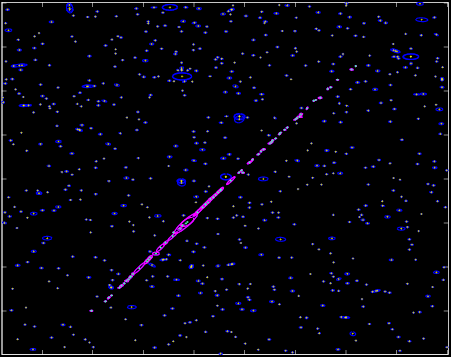
Here is another example: this time part of the data from the ukr08 plate. Can you see the satellite track? Place your mouse on the image to reveal what is found by the satellite track detector.
Here is a look at part of a much denser plate, ukj518, which has just under 5 million objects in the catalogue:
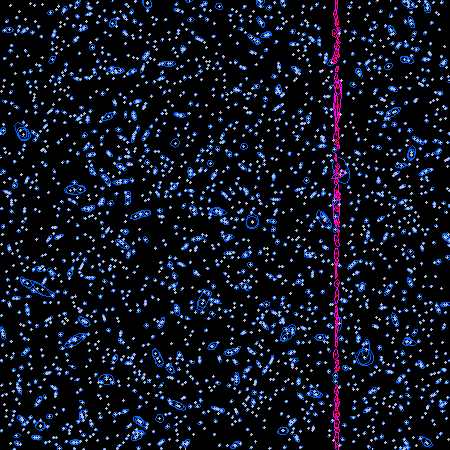
Of course there are other types of problems in these catalogues. Here are example results from ukj005 of optical halo detection:
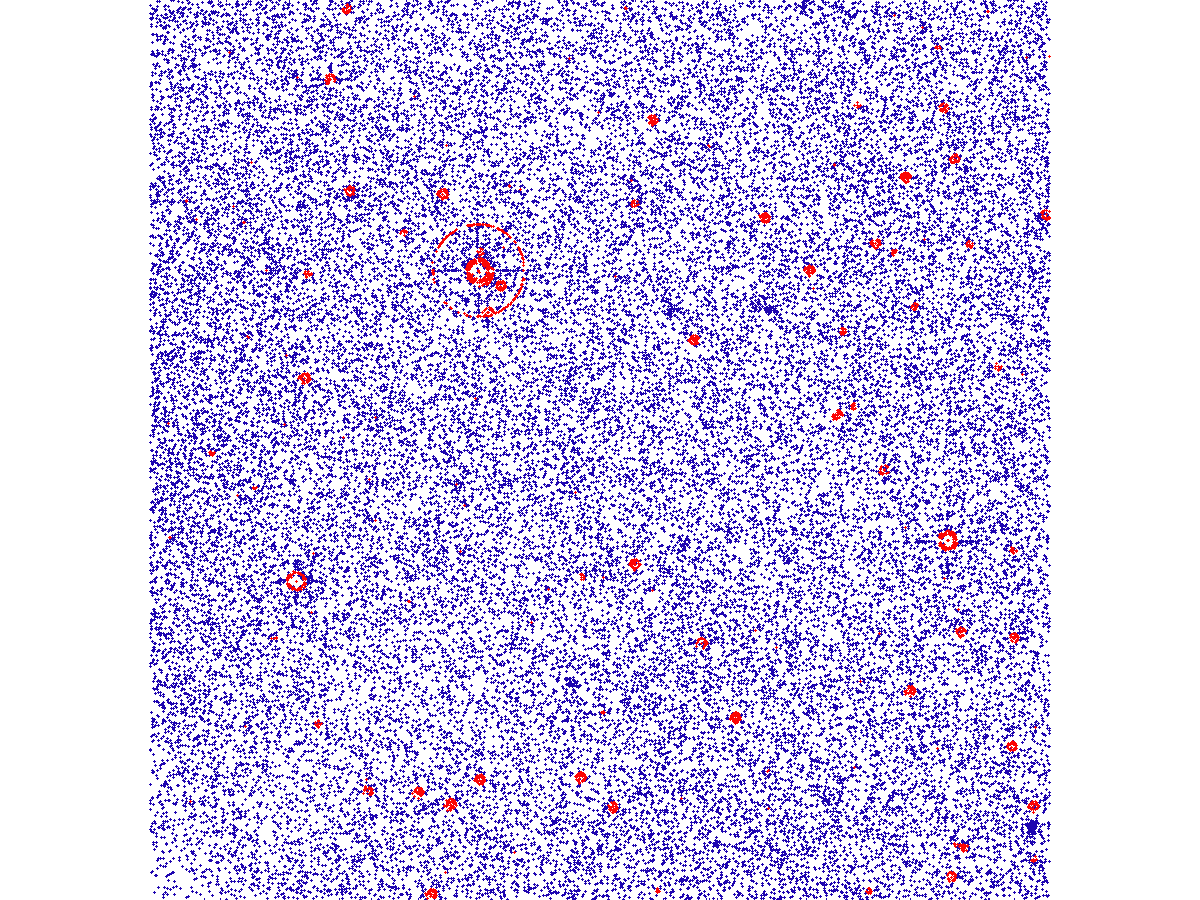
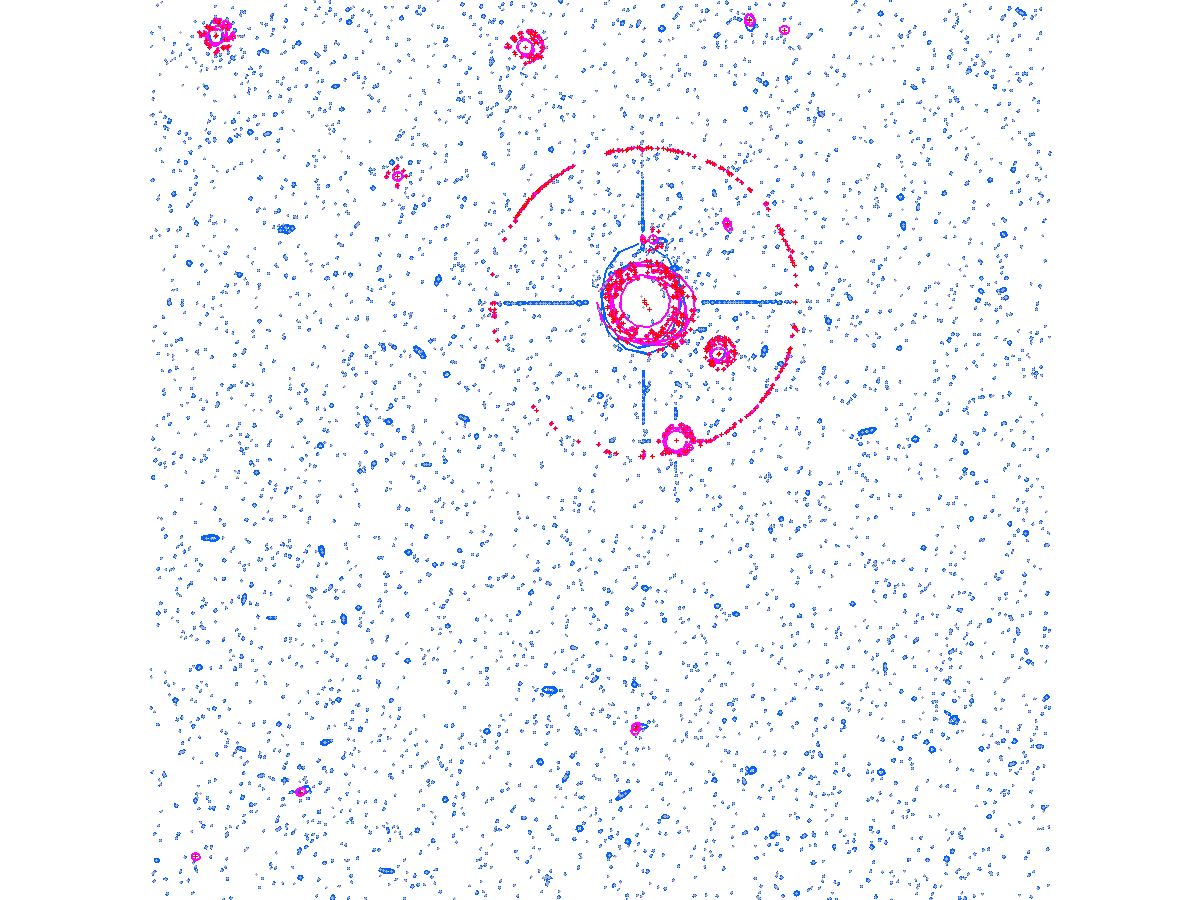
As mentioned earlier this work revolves around renewal strings, a generative probabilistic model for curved tracks such as these, which enables a Bayesian approach for detection to be followed. At this stage we can give an example of the sample from a simple renewal string model:
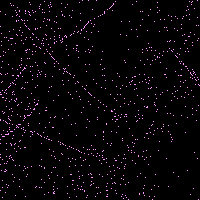
Of course there is much flexibility in the model, which cannot be seen from a single sample.
Some very preliminary results of the halo and diffraction spike detection run on the whole UKJ survey can be found here.
Some zoomable demo results of the linear track detector are available in a nifty site. They are here for netscape 6+, ie5+ (best results) and recent mozilla based browsers. A less flashy version is here for browsers with naff javascript implementations (including opera and netscape4).
We are also planning some work on direct cleanup of H-alpha images using similar techniques. An example plate of the H-alpha survey can be found here. It is not hard to find spurious artefacts. For full details see the SuperCOSMOS site.
The work described on this page was part of an Astronomical Data Mining project, led by Chris Williams and Andrew Lawrence, funded directly by the University of Edinburgh.
The research was done in collaboration with Nigel Hambly, Chris Williams and Bob Mann, along with valuable contributions from others in the wide field astronomy group at the Royal Observatory, Edinburgh. The final computational runs were made possible through IBM's generous provision of the pseries machine, BlueDwarf to Informatics.
